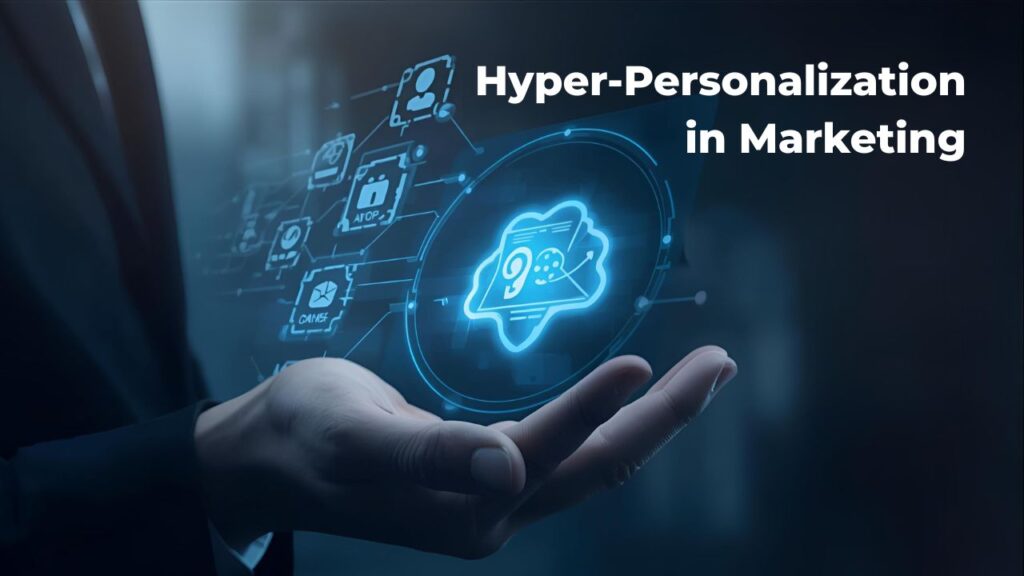Today’s customers expect more than just generic marketing messages; they want brands to truly understand their needs, preferences, and timing. Generic personalization, like simply using a customer’s first name, is no longer enough to grab attention or build trust. This is where hyper-personalization helps, by leveraging real-time data, AI, and advanced analytics, businesses can craft experiences that feel uniquely designed for every individual.
Hyper-personalization is the practice of using advanced data insights, such as browsing history, past purchases, demographics, and behavioral patterns, to craft highly individualized customer experiences. By leveraging AI, machine learning, and real-time data, businesses can anticipate customer needs and create seamless.
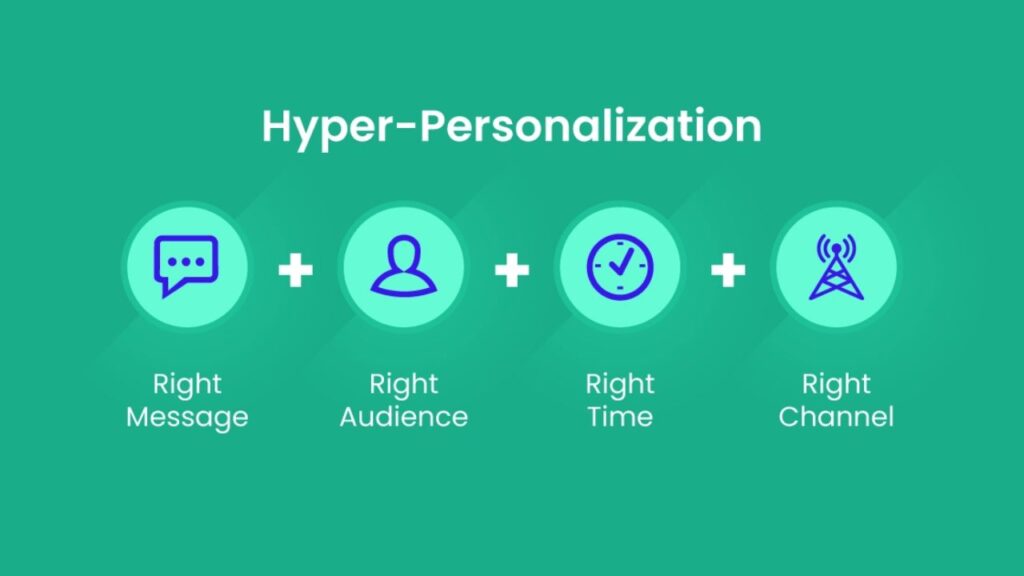
Key Components of Hyper-Personalization in Marketing
Hyper-personalization goes beyond basic segmentation by using real-time data, AI, and behavioral insights to deliver truly individualized experiences. It focuses on tailoring every touchpoint’s content, offers, and timing to each user’s unique preferences.
- Real-time data analysis
Tailoring interactions based on live user activity. This allows brands to respond instantly, whether it’s recommending a product right after a user browses it or sending timely reminders. It keeps engagement high by meeting customers’ needs.
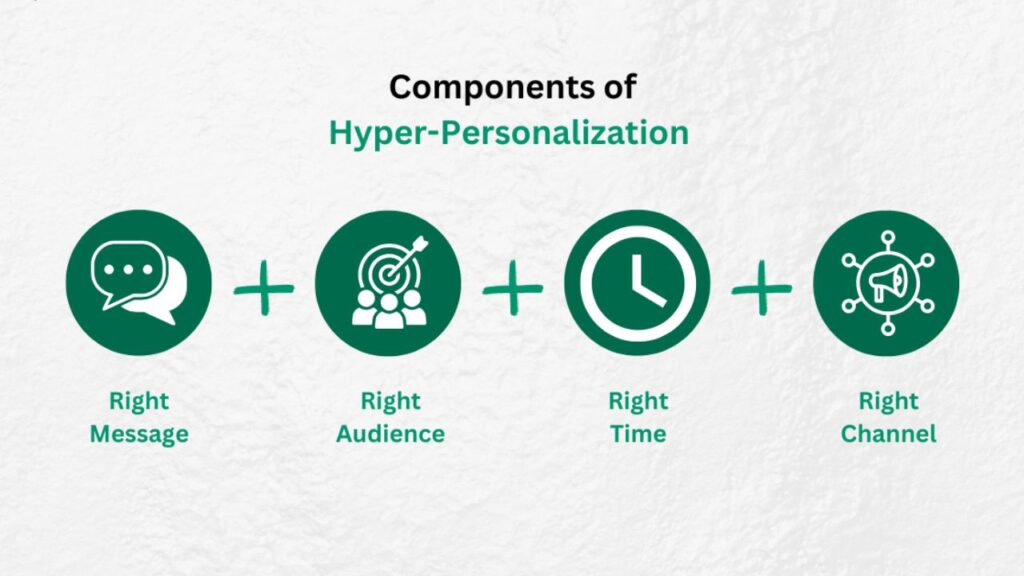
- AI & machine learning
Predicting what customers want before they even ask. These tools analyze patterns and automate decisions, helping businesses scale personalization effortlessly. This leads to more relevant experiences and higher customer satisfaction over time.
- Omnichannel integration
Ensuring a seamless personalized experience across email, web, mobile, and social platforms. Consistency across channels builds trust and keeps the customer journey smooth and engaging.
Why Hyper-Personalization Matters in Lead Generation
The more specific you are, the more your customer will be able to understand your product\ service. High-quality leads aren’t just about numbers; they’re about relevance. Hyper-personalization ensures that your marketing reaches the right person at the right time with the right message.
Personalized interactions make potential customers feel understood, which improves click-through rates, conversions, and overall customer satisfaction. Moreover, hyper-personalization helps businesses prioritize their resources.
Benefits of Hyper-Personalization in Marketing
Hyper-personalization helps brands create meaningful, timely, and highly relevant interactions. It not only improves engagement but also drives stronger conversions and long-term customer loyalty.
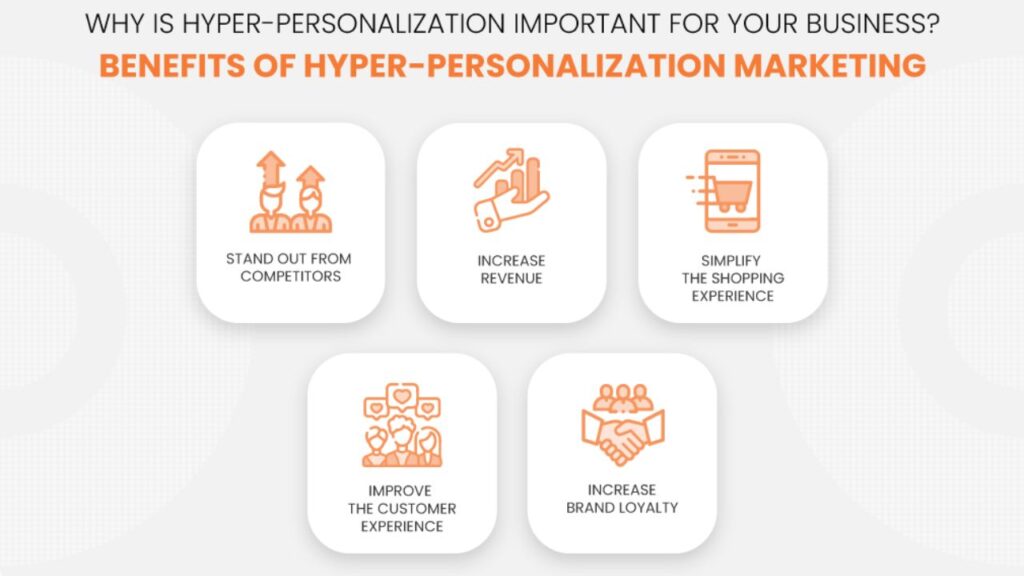
- Increased engagement
Customers engage more with offers that feel relevant to them. Delivering the right content at the right time grabs attention and encourages clicks. This leads to higher open rates and more time spent on your website. Using AI video models to tailor video experiences can further boost open rates, watch time, and overall interaction.
- Higher conversion rates
Tailored recommendations align with real needs, boosting sales. When every touchpoint feels personal, like dynamic landing pages, product suggestions, or email campaigns, it reduces friction and nudges prospects closer to purchase.
- Better customer loyalty
Personalized experiences build stronger relationships. Customers who feel seen and understood are more likely to stay engaged with your brand, renew subscriptions, and recommend your products to others.
- Efficient resource use
Marketing efforts target qualified prospects instead of broad audiences. This ensures smarter budget allocation and more effective campaigns. As a result, teams achieve higher ROI across all channels.
- Improved customer insights
Hyper-personalization reveals data on user behavior, preferences, and pain points. These insights help refine product development and content strategy. They also support smarter, long-term business decisions.
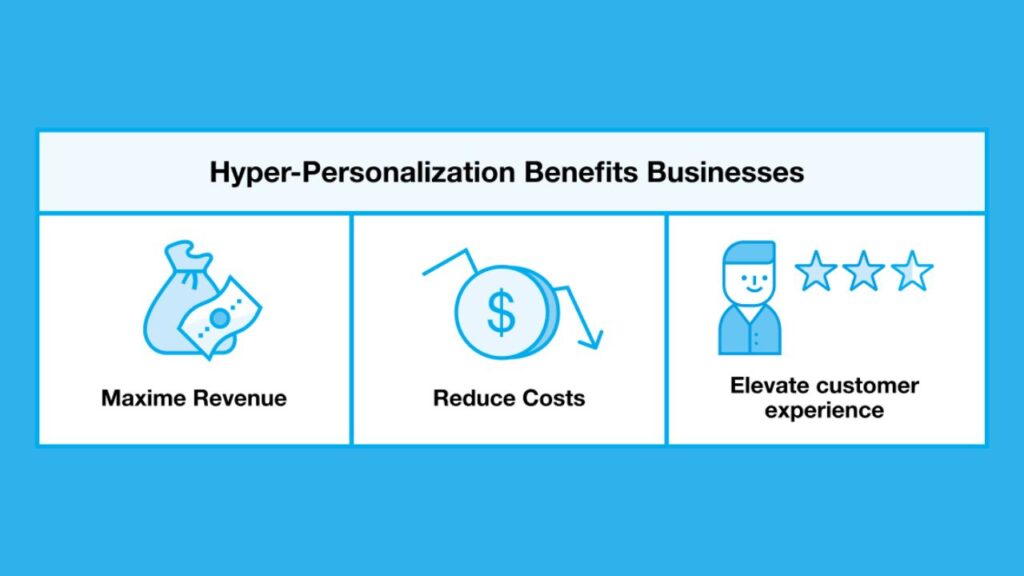
- Enhanced brand perception
Delivering seamless, relevant experiences makes your brand appear more customer-centric and trustworthy. This positions you ahead of competitors who still rely on generic, one-size-fits-all messaging.
- Reduced churn and abandoned carts
Personalized follow-ups, reminders, and offers help win back customers before they drop off completely, increasing retention rates. For instance, sending cart abandonment emails with product images, personalized discounts, or urgency-driven messages can significantly boost recovery rates.
How to Implement Hyper-Personalization for Lead Generation
Implementing hyper-personalization starts with understanding your audience deeply and using the right tools. With a structured approach, you can create tailored experiences that attract, engage, and convert quality leads.
Also, for brands looking to create a strong visual identity alongside personalized marketing campaigns, using a professional Logo maker can help ensure your branding aligns with the tailored experiences you’re delivering.
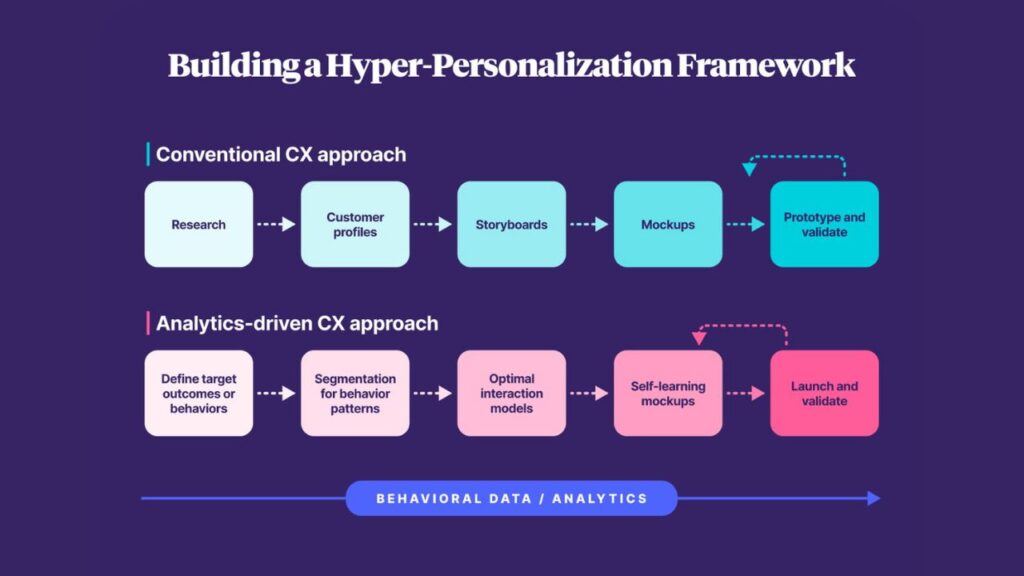
1. Collect the Right Data
Start with a strong data foundation. Capture insights from website interactions, CRM systems, purchase history, and social media engagement. Also, ensure data accuracy and compliance with privacy laws (like GDPR/CCPA) to build trust with your audience.
Don’t just collect data, enrich it with third-party tools, and continuously update it to keep it relevant. Clean, up-to-date data ensures your personalization efforts hit the right target every time.
2. Segment Beyond Demographics
Go deeper than age or location, consider behavioral triggers, buying intent, and engagement frequency.
Micro-segmentation helps you deliver highly relevant offers that resonate with each customer segment. You can also use psychographic segmentation (values, lifestyle, motivations) to craft messages that truly speak to what drives your audience’s decisions.
3. Leverage Predictive Analytics
Use AI-powered tools to forecast customer needs and suggest relevant offers before they search for them. Use AI-powered tools to forecast customer needs and suggest relevant offers before they search for them.
Predictive insights can help you prioritize leads and engage them at the perfect moment in their buying journey. For example, if a lead has visited your pricing page multiple times, trigger a personalized offer or sales outreach to convert them faster.
4. Personalize Content Across Channels
- Email marketing: Dynamic subject lines, product recommendations, and tailored content. Add behavioral triggers like cart abandonment reminders or loyalty rewards to increase conversions.
- Website experiences: Personalized landing pages and banners based on browsing history. Highlight offers or content that match the user’s last visit to keep them engaged.
- Social media ads: Targeted campaigns using behavioral insights.Leverage lookalike audiences to reach new users with similar interests to your best customers. Targeted campaigns using behavioral insights. Considering a media post generator can be helpful, too.
5. Continuously Test and Optimize
A/B testing, real-time feedback, and performance analytics ensure your personalization strategy evolves with customer expectations. Regularly refresh your data segments and be creative to avoid fatigue and keep engagement rates high. By integrating insights from front-end development services, you can enhance user experience even further. Use cohort analysis to compare performance over time and identify which personalization efforts are driving the best results.
Pro Tip
Digital Marketing Strategy
And when paired with a strong digital marketing strategy (or even better, the skills you gain from a structured digital marketing course), you can build campaigns that not only engage but also convert consistently.
Start Small and Scale Gradually
Instead of personalizing everything at once, focus on one channel or campaign first. Test your approach, measure its impact, and optimize based on results. Once you find what works, scale it across other channels for consistent and sustainable improvement.
Conclusion
Hyper-personalization is no longer a “nice-to-have”, it’s a must-have strategy for businesses looking to generate high-quality leads. By turning data into meaningful insights, brands can create marketing campaigns that resonate with individual prospects, boost engagement, and drive long-term loyalty. The future of lead generation lies in understanding customers at a deeper level, and hyper-personalization makes that possible.
